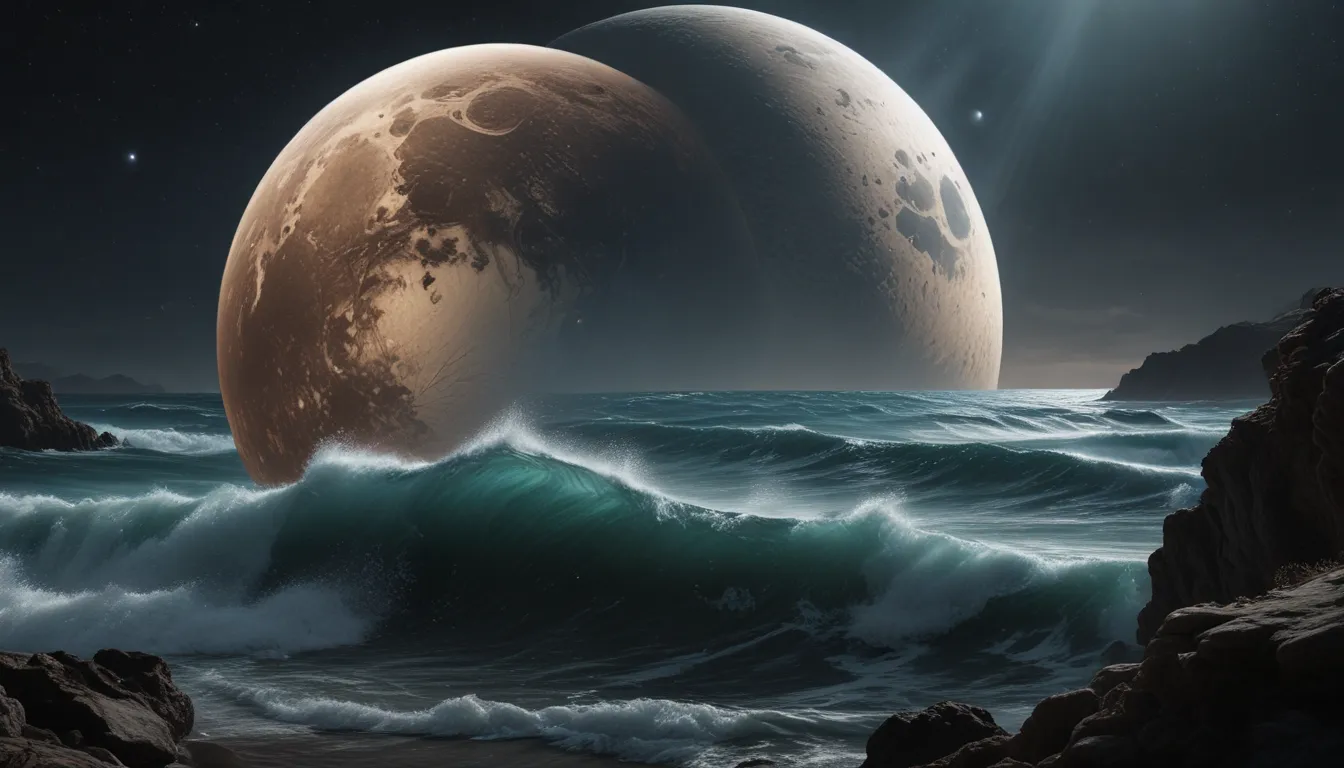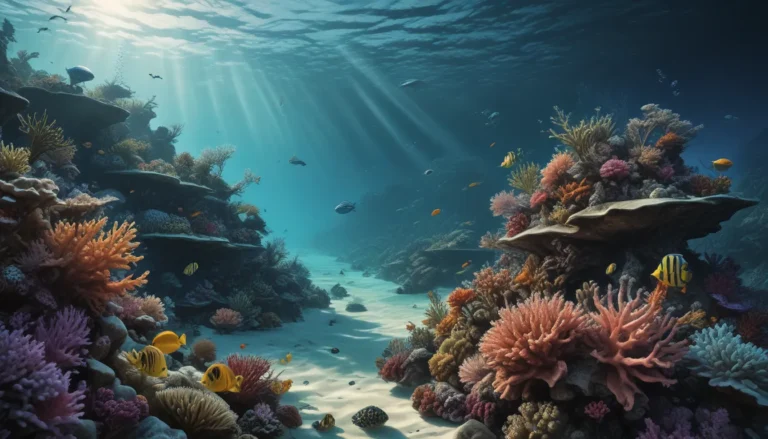The pictures we use in our articles might not show exactly what the words say. We choose these pictures to make you interested in reading more. The pictures work together with the words but don’t take their place. The words still tell you the important facts.
Are you ready to embark on a journey through the captivating world of Triton, Neptune's largest moon? Brace yourself for a cosmic adventure filled with intriguing discoveries and mind-boggling facts. Triton is a celestial enigma that has puzzled scientists and space enthusiasts alike with its unique features and mysterious allure. From its retrograde orbit to icy geysers and potential subsurface ocean, Triton is a treasure trove of cosmic wonders waiting to be unraveled. Join us as we delve into the 12 best Triton moon facts that will leave you starstruck and yearning for more cosmic marvels. Let's blast off into the realm of icy geysers, backward orbits, and moon mysteries – are you ready for liftoff?
Unveiling the Enigmatic Triton
Triton, Neptune's largest moon, stands out in the solar system with its peculiar characteristics. Unlike most moons that orbit their planets in the same direction as the planet's rotation, Triton rebels against the norm with its retrograde orbit, moving in the opposite direction to Neptune's spin. This intriguing trait hints at Triton's possible origin as a captured object from the distant Kuiper Belt, a region teeming with icy bodies beyond Neptune's realm.
The Frozen World of Triton: Ice, Geysers, and More
- Triton's surface is a frozen mosaic of nitrogen, water ice, carbon dioxide, and methane, creating a brilliant spectacle that makes it one of the brightest moons in our solar system.
- Geysers on Triton erupt nitrogen gas and dust particles into space, forming towering plumes that soar up to 8 kilometers (5 miles) high. Discovered by the Voyager 2 spacecraft during its flyby in 1989, these geysers offer a glimpse into Triton's dynamic geologic activity.
The Whispers of Triton’s Thin Atmosphere
- Despite its icy surroundings, Triton boasts a thin atmosphere predominantly composed of nitrogen, with traces of methane. This rare atmospheric presence in the outer solar system is sustained by the sublimation of nitrogen ice from the moon's surface.
- Triton's atmospheric pressure undergoes seasonal fluctuations due to varying rates of nitrogen ice sublimation caused by shifts in sunlight exposure as the moon journeys around Neptune in its orbit.
Deciphering Triton’s Orbit and Rotation
- Triton's retrograde orbit holds the key to unraveling its history, implying that the moon was not originally part of Neptune's system but was captured by the planet's gravitational pull. This capture event could have triggered significant disturbances among Neptune's original moons, potentially altering their orbits or leading to their demise.
- Completing a full orbit around Neptune in approximately 5.9 Earth days, Triton's rotation period is synchronized with its orbit, always presenting the same face to Neptune – a cosmic dance reminiscent of our Moon's interaction with Earth.
The Frigid Realms and Ice Volcanoes of Triton
- Surface temperatures on Triton plummet to staggering lows of around -235 degrees Celsius (-391 degrees Fahrenheit), shaping its icy landscape and geological processes.
- Cryovolcanism, a captivating phenomenon on Triton, involves ice volcanoes ejecting a mixture of liquid water and ammonia onto the moon's surface, akin to volcanic activity on Earth but with ice as the molten medium.
Delving Deeper: Triton’s Potential Aquatic Realm
- Scientists speculate about the possibility of a subsurface ocean of liquid water beneath Triton's icy crust, fueled by the moon's geologic activity and the presence of cryovolcanic processes hinting at internal heat sources.
Unveiling the Kaleidoscopic Tapestry of Triton
- Triton's surface showcases a mesmerizing array of contrasts, featuring dark streaks intermingled with pink, reddish, or brown patches attributed to the distribution of various ices and the exposure of subsurface material.
Voyager 2’s Legendary Encounter
- NASA's Voyager 2 spacecraft made history in 1989 by capturing detailed images and data of Triton during its historic flyby, offering invaluable insights into the moon's atmosphere, geology, and intriguing geysers that have shaped our understanding of this distant celestial body.
Embracing the Future of Triton Exploration
- As scientists ponder future missions to Triton, the prospect of delving deeper into this enigmatic moon tantalizes the scientific community. These upcoming missions could shed more light on Triton's origins, potential subsurface ocean, and its intricate interplay with Neptune, opening new vistas into the outer solar system's lunar mysteries.
Beyond Earth’s Horizon: Triton’s Cosmic Odyssey
Embarking on a voyage through the mysteries of Triton unveils a cosmic adventure brimming with revelations and wonder. From its rebellious orbit to the mesmerizing cryovolcanoes, each facet of Triton challenges our comprehension of celestial bodies within our solar neighborhood. The faint nitrogen-laced atmosphere and the tantalizing prospect of a hidden ocean beneath its icy exterior beckon us to explore the realms beyond our terrestrial confines. Traverse the icy landscapes of Triton and witness geysers shooting into the void, enriching your cosmic knowledge and igniting a spark of curiosity for the uncharted territories awaiting discovery. As we gaze at the starlit heavens, Triton serves as a beacon of boundless possibilities and enigmatic marvels entwined within the fabric of the universe. So, when you gaze skyward on a clear night, remember that worlds like Triton await, unveiling the majestic diversity and beauty of our cosmic tapestry.
Your Feedback Matters
Our dedication to delivering credible and engaging content is ingrained in our mission to inspire curiosity and foster learning. Each fact shared on our platform is a testament to the diverse insights contributed by individuals like you, ensuring a rich tapestry of authentic information. Trust in our unwavering commitment to quality and authenticity as you delve into the wonders of the cosmos. Join us on this riveting journey of exploration and discovery, fueled by a shared passion for unraveling the mysteries of the universe.






